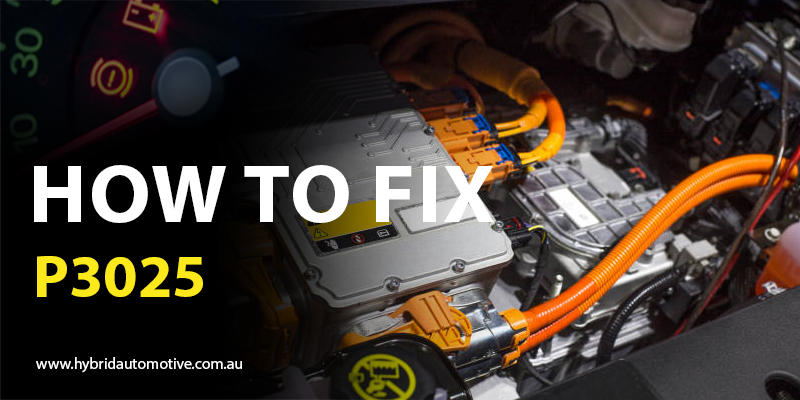In the realm of automotive diagnostics, encountering a P3025 fault code can signal a significant issue, particularly when it pertains to the hybrid battery assembly. This specific fault code can cause concern among vehicle owners, prompting them to seek immediate solutions. Understanding the potential causes behind this code is crucial for effective diagnosis and repair. In this article, we delve into the possible reasons for the P3025 code, how to address it, and the associated costs of diagnosis.
Possible Causes
Hybrid Battery Deterioration: Over time, hybrid batteries can degrade due to factors such as age, usage patterns, and environmental conditions. This deterioration may manifest in various ways, including reduced capacity and voltage irregularities, ultimately triggering fault codes like P3025.
Cell Imbalance: Within a hybrid battery pack, individual cells can experience variances in performance and capacity. Cell imbalance can occur due to factors like manufacturing inconsistencies or prolonged periods of inactivity, leading to voltage disparities that trigger fault codes.
Faulty Battery Management System (BMS): The BMS plays a crucial role in monitoring and regulating the hybrid battery’s performance. If the BMS malfunctions or loses calibration, it may misinterpret battery data, causing erroneous fault code notifications like P3025.
Internal Battery Faults: Physical damage, internal short circuits, or component failures within the hybrid battery can lead to the emergence of fault codes. These faults may arise from manufacturing defects, thermal stress, or improper handling of the battery assembly.
External Factors: Environmental conditions such as extreme temperatures, moisture ingress, or exposure to contaminants can adversely affect hybrid battery performance and contribute to the occurrence of fault codes like P3025.
How to Fix
Resolving a P3025 fault code typically involves a systematic approach aimed at diagnosing and rectifying the underlying issues. Here are steps commonly undertaken to address this issue:
Diagnostic Scanning: Begin by using a diagnostic scanner to retrieve the specific fault code (P3025) and assess any accompanying codes or data related to hybrid battery performance.
Visual Inspection: Conduct a visual inspection of the hybrid battery assembly, checking for signs of physical damage, corrosion, or loose connections. Inspect the battery terminals, wiring harnesses, and associated components for any abnormalities.
Battery Testing: Utilize specialized equipment to perform comprehensive testing of the hybrid battery, including capacity tests, voltage measurements, and cell balancing assessments. Identify any cells or modules exhibiting irregularities or failures.
BMS Calibration: If deemed necessary, recalibrate the Battery Management System to ensure accurate monitoring and control of hybrid battery parameters. This may involve software updates or reprogramming procedures conducted by qualified technicians.
Component Replacement: Replace any defective components identified during the diagnostic process, such as faulty cells, damaged wiring, or malfunctioning BMS modules. Ensure that replacements adhere to manufacturer specifications and quality standards.
Environmental Remediation: Implement measures to mitigate environmental factors that could impact hybrid battery performance, such as improving ventilation, sealing potential ingress points, or installing protective barriers.
Post-Repair Verification: After completing repairs or replacements, conduct thorough testing and verification to confirm the resolution of the P3025 fault code. Perform test drives and monitor battery performance to ensure stability and reliability.
Cost to Diagnose
The cost of diagnosing a P3025 fault code can vary depending on several factors, including the vehicle make and model, the complexity of the diagnostic procedure, and the rates charged by the service provider. Typically, the diagnostic fee for hybrid battery related issues can be a few dollars. Call for Cost. Additional costs may arise if special equipment, replacement of parts, or extensive testing is required.
Vehicle owners need to consult with reputable automotive technicians or hybrid specialists for accurate diagnosis and repair estimates. Transparent communication regarding costs and procedures can help facilitate informed decision-making and ensure the timely resolution of P3025 fault codes.


